Conquer Cookware Messes!
This week Jill Nystul, of One Good Thing by Jillee (www.onegoodthingbyjillee.com), shared some effective ways to remove burnt messes from cookware. Who hasn’t dealt with this challenge from time to time? Since we tend to do lots of cooking in colder weather (and of course, for the upcoming holidays), this is timely information.
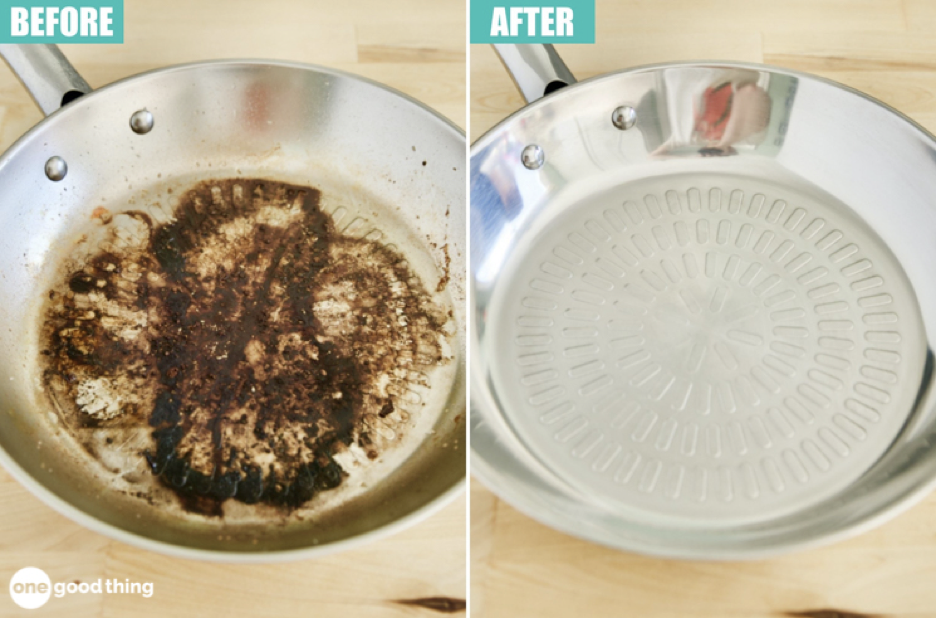
I’ll preface her remarks with my own tried and true tip: Always fill your burnt pan with an inch or two of water, add a couple drops of liquid dish soap, and return the pan to your stove top. Heat the soapy water for about 15 minutes. The burnt-on gunk will loosen up and then your pan will be all primed for the techniques given below.
To start off, we all know that wearing rubber gloves when using cleaning agents is wise. This stuff can be harsh on skin, so it’s important to protect your hands.
BAR KEEPERS FRIEND® PAIRED WITH A SCRUB DADDY®. Those who’ve used this product are convinced it’s one of the best options there is for cleaning stubborn messes off of cookware, including stainless steel, anodized aluminum, enameled cast iron, and copper. (It works well on Pyrex® bakeware too!)
Just sprinkle Bar Keeper onto a wet Scrub Daddy, then scrub in a circular motion. The mess should start breaking up shortly, but if it doesn’t, let it sit for about a minute before trying again. Once you pot or pan is clean, wash it with warm, soapy water and rinse well.
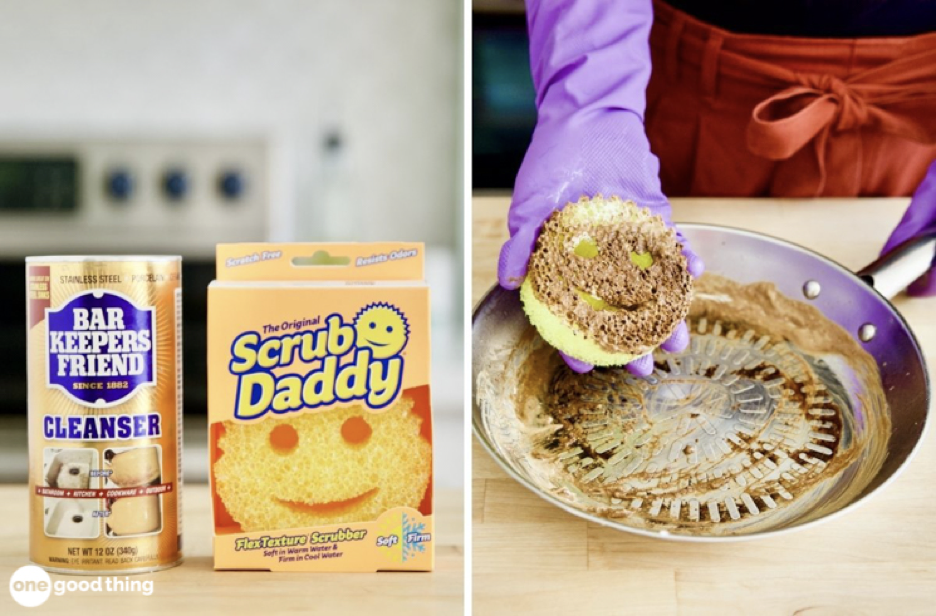
DSIHWASHER DETERGENT TAB. Dishwasher detergent tabs (those made of compacted detergent powder, not the dissolvable liquid packs) act like an all-in-one cleaning agent and scrubber. The gritty powder helps scour through messes while the detergent breaks down grease and food residues.
To use it, just add a smidge of hot water to the stained pot or pan, dip the detergent tab into the water, and scrub. With a bit of elbow grease and determination, your cookware will be gleaming in no time.
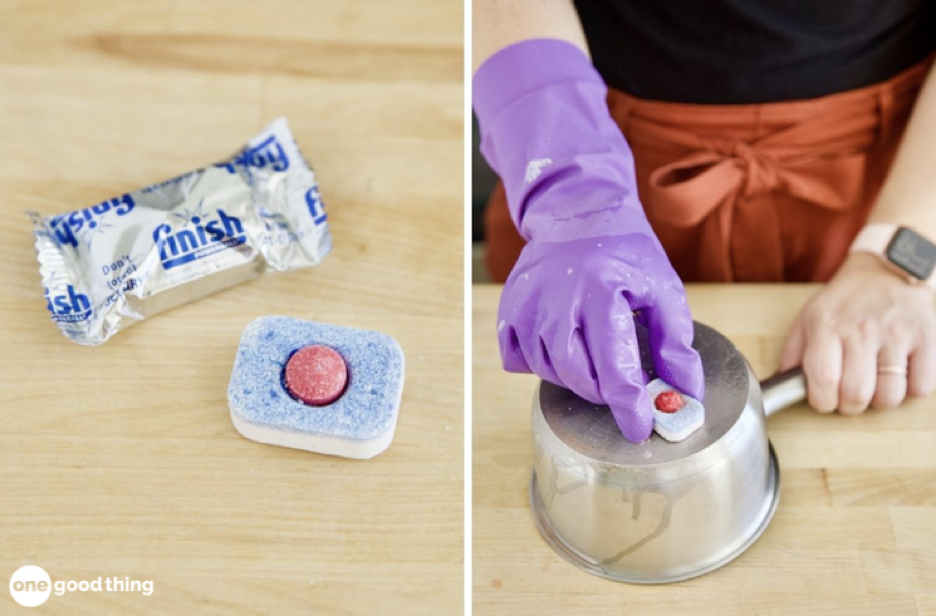
BAKING SODA + HYDROGEN PEROXIDE. Jillee says this is one of her all-time favorite cleaning duos. She mixes a bit of both together to form a paste, then smears it over the mess and allows it to sit for about 20 minutes before scrubbing. She’s found that when using baking soda and hydrogen peroxide, the longer you can let this mixture sit, the less scrubbing you’ll typically need to do.
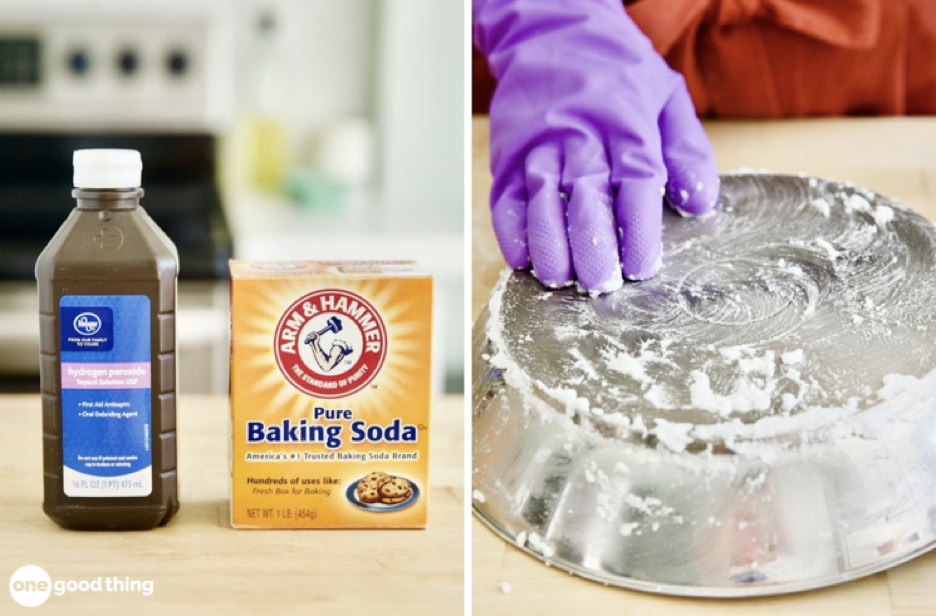
In closing, a couple reminders: Since cookware is easier to clean when it’s still a bit warm, make a habit of getting it into hot, soapy water as quickly as possible. This way, the less likely it will be for the food residue to harden into a difficult-to-remove mess.
And don’t forget to scrub the sides and bottom of your cookware. And remember that the area where the handle meets the body of the pan is especially susceptible to grease and food residue build-up. So be especially thorough there.
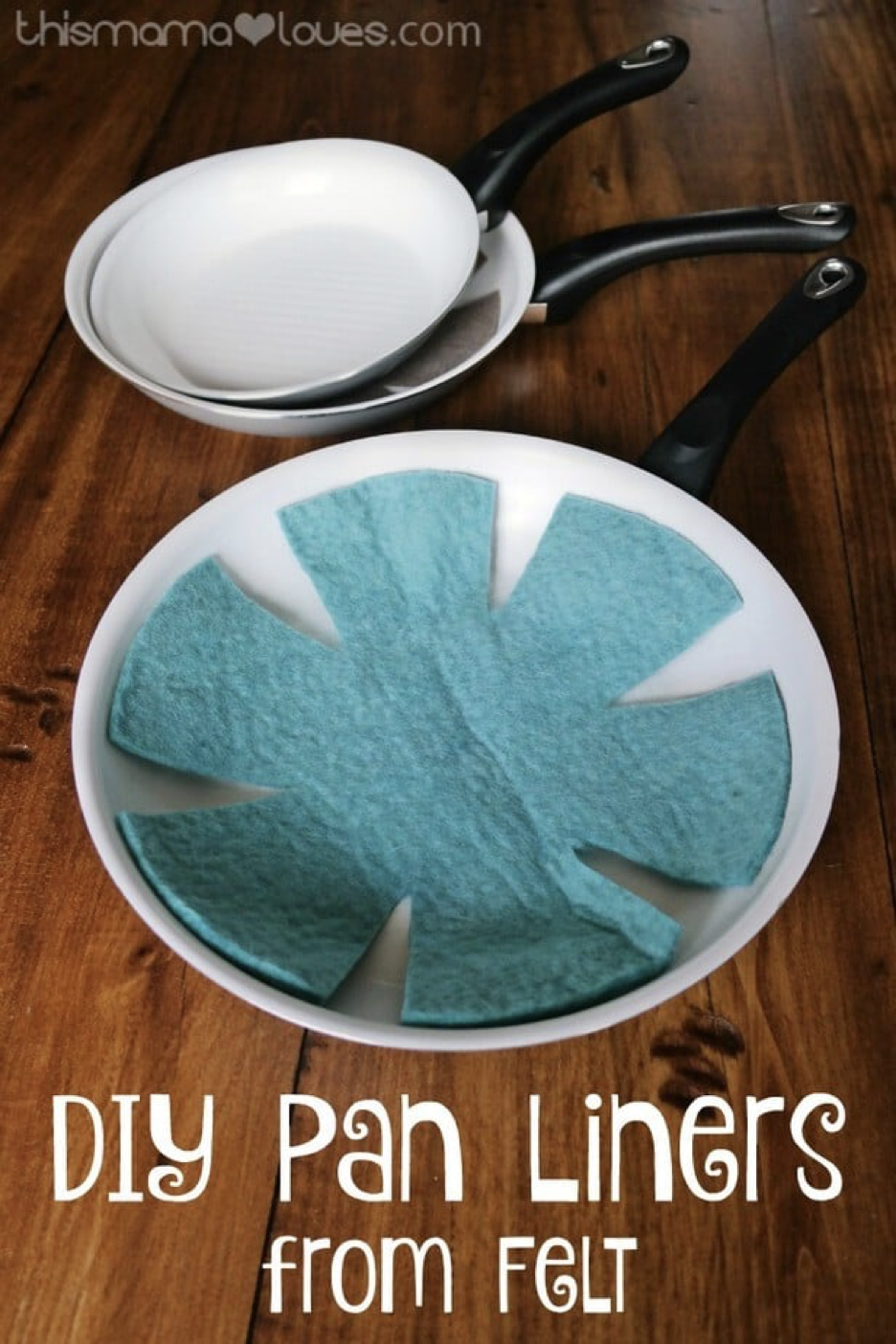
Finally, we all know good cookware is expensive and worth conscientious care. So here’s one other idea from moi: Consider cutting circles of felt to fit each pan interior as a way to prevent knicks and scratches when stacking your pans. Of course, if not interested in making your own, these are readily available in kitchen stores and online. (And the felt makes getting them out and putting them away quieter—less clinking and clanking.)

I’ll preface her remarks with my own tried and true tip: Always fill your burnt pan with an inch or two of water, add a couple drops of liquid dish soap, and return the pan to your stove top. Heat the soapy water for about 15 minutes. The burnt-on gunk will loosen up and then your pan will be all primed for the techniques given below.
To start off, we all know that wearing rubber gloves when using cleaning agents is wise. This stuff can be harsh on skin, so it’s important to protect your hands.
BAR KEEPERS FRIEND® PAIRED WITH A SCRUB DADDY®. Those who’ve used this product are convinced it’s one of the best options there is for cleaning stubborn messes off of cookware, including stainless steel, anodized aluminum, enameled cast iron, and copper. (It works well on Pyrex® bakeware too!)
Just sprinkle Bar Keeper onto a wet Scrub Daddy, then scrub in a circular motion. The mess should start breaking up shortly, but if it doesn’t, let it sit for about a minute before trying again. Once you pot or pan is clean, wash it with warm, soapy water and rinse well.

DSIHWASHER DETERGENT TAB. Dishwasher detergent tabs (those made of compacted detergent powder, not the dissolvable liquid packs) act like an all-in-one cleaning agent and scrubber. The gritty powder helps scour through messes while the detergent breaks down grease and food residues.
To use it, just add a smidge of hot water to the stained pot or pan, dip the detergent tab into the water, and scrub. With a bit of elbow grease and determination, your cookware will be gleaming in no time.

BAKING SODA + HYDROGEN PEROXIDE. Jillee says this is one of her all-time favorite cleaning duos. She mixes a bit of both together to form a paste, then smears it over the mess and allows it to sit for about 20 minutes before scrubbing. She’s found that when using baking soda and hydrogen peroxide, the longer you can let this mixture sit, the less scrubbing you’ll typically need to do.

In closing, a couple reminders: Since cookware is easier to clean when it’s still a bit warm, make a habit of getting it into hot, soapy water as quickly as possible. This way, the less likely it will be for the food residue to harden into a difficult-to-remove mess.
And don’t forget to scrub the sides and bottom of your cookware. And remember that the area where the handle meets the body of the pan is especially susceptible to grease and food residue build-up. So be especially thorough there.

Finally, we all know good cookware is expensive and worth conscientious care. So here’s one other idea from moi: Consider cutting circles of felt to fit each pan interior as a way to prevent knicks and scratches when stacking your pans. Of course, if not interested in making your own, these are readily available in kitchen stores and online. (And the felt makes getting them out and putting them away quieter—less clinking and clanking.)
Sources:
- www.onegoodthingbyjillee.com
- www.thismamaloves.com
 Alice Osborne
Alice Osborne
Weekly Newsletter Contributor since 2006
Email the author! alice@dvo.com
